Let’s take a look at some of the essential actions of Ardha Chandrasana, and then I’ll share a short practice that sequences these actions to facilitate a stable, comfortable (but not easy!) posture.
1 / Firm the Outer Hip In
What the heck does it mean to firm the outer hip in? Hugging the outer standing hip is a contraction of gluteus medius. When we firm the outer hip in, the pelvis buoys up off the weight-bearing thigh bone (femur). Firming the outer hip in also rotates the pelvis away from the standing femur (contralaterally).
This action is commonly inhibited by gluteus medius weakness and/or tight inner thigh muscles (adductors)—which is why the idea of stacking the hips doesn’t really stack up. More on that later.
2 / Rotate the Standing Thigh Open Externally
In order to maintain the integrity of the standing hip, knee, ankle, and foot, the standing thigh must externally rotate. Rotating the thigh externally not only maintains the Tadasana alignment of the standing leg, it also creates more space for the hip socket to roll over the head of the standing femur as the pelvis rotates open towards the ceiling.
Restrictions inhibiting the external rotation of the standing thigh further complicate the issue of “stacking” the hips. Hear me out. If the standing thigh is pulled along for the ride by tight adductors and/or internal rotators as the pelvis attempts to square, the standing knee can torque. Simply put: your thigh rolls in but your leg is fixed because your foot is planted on the ground. The inner arch of the standing foot may also collapse which makes it a lot harder to balance in the pose.
The big takeaway? Firming the outer hip in and externally rotating the standing thigh are both essential to supporting the hip joint in Ardha Chandrasana.
As I write this, I just want you to know I’m consciously trying to pump the breaks on how much detail to share. That said, I want to leave with you an opposing or secondary action. Once external rotation has been firmly established, the standing thigh rolls slightly inward in order to release the groin and create more space for the sacrum, and to ground the inner leg/heel into the floor. I share this only to point out that nothing is ever only one thing, and that yoga (like life!) is full of contradiction. After all, balance is about exploring all directions at once. Okay, moving on!
3 / Lift the Quadriceps
It’s kind of sobering when you realize just how much your quads have to work to straighten your knee. In straight-legged standing poses especially, it’s tempting just to prop yourself up on the knee joint. Guilty as charged.
In the case of Ardha Chandrasana, contracting the quadriceps is not only about stabilizing the knee joint, it’s about lifting the whole leg. You want to pull up so much it almost feels like you’re being pulled into relevé. Lifting the quads will support the balance on the standing leg in Half Moon.
4 / Spin the Bottom Ribs Forward and Up
Ardha Chandrasana is an open twist, which means the torso rotates away from the standing/front thigh. The ribcage spirals up to the ceiling, but I also like to think about the lower abdomen, or the pelvic belly, sloshing upwards as well. While the pelvis rotates open towards the side wall only to the degree available given the strength/mobility at play, the abdomen can roll up to the ceiling inside the bowl of the pelvis. In my experience, this creates a long, fluid spiral through the length of the spine, like the double helix of a DNA molecule.
It’s the rotation of the torso up to the ceiling that initiates the spiraling of the chest and ultimately the turning of the head and the lift of the gaze to the top hand.
5 / Reach Through the Top Leg/Heel
Balancing in Ardha Chandrasana is a lot harder if the top leg is dead weight.
Reaching through the top leg and heel is a fairly straightforward action, but again, there are always infinite layers of nuance to explore. Think about reaching the leg as if from the abdomen. For me, this creates a feeling of emptiness in the abdomen that also connects to the spiraling of the pelvic belly up to the ceiling. It also initiates a subtle external rotation of the areal thigh which helps to stabilize my balance.

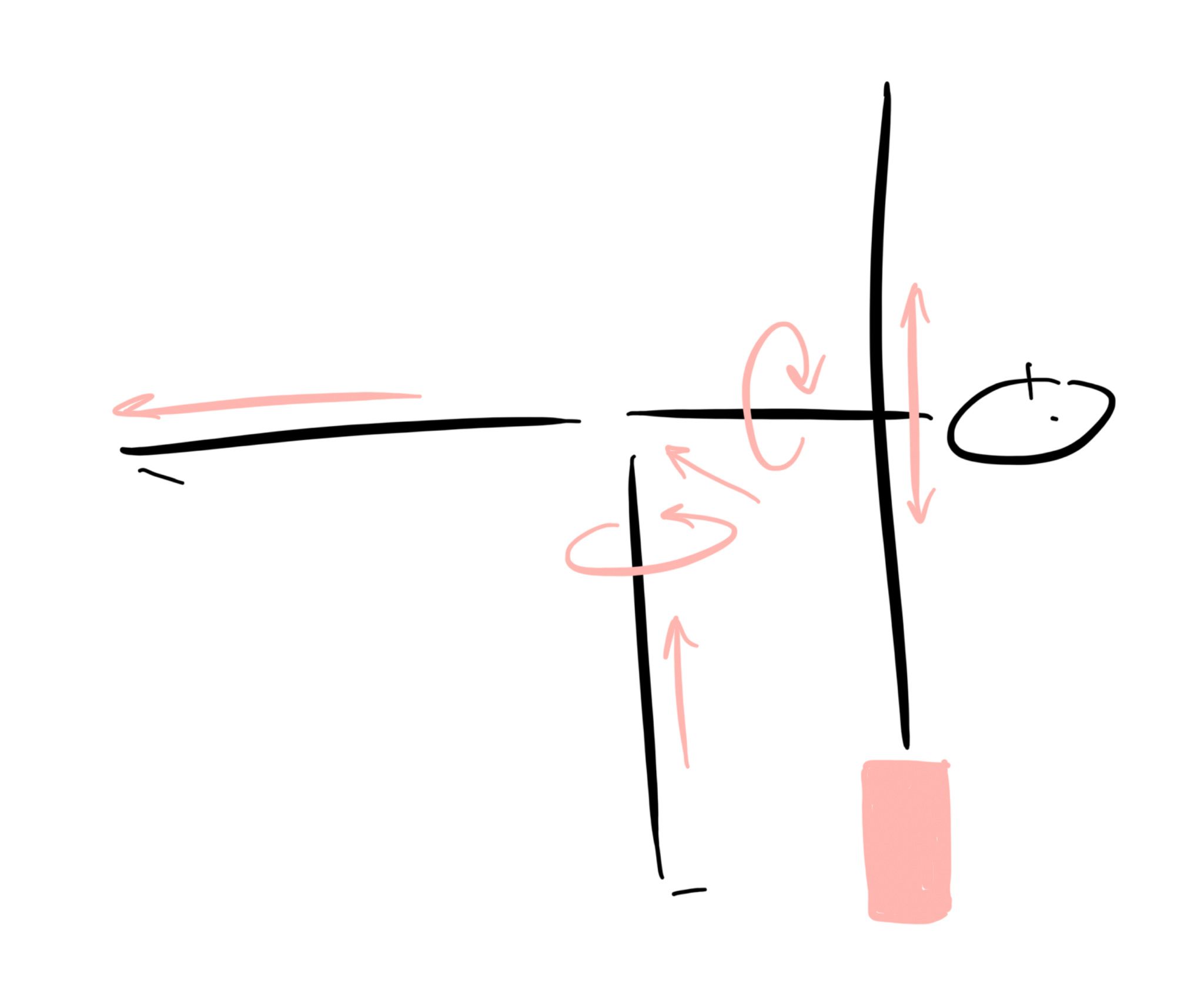
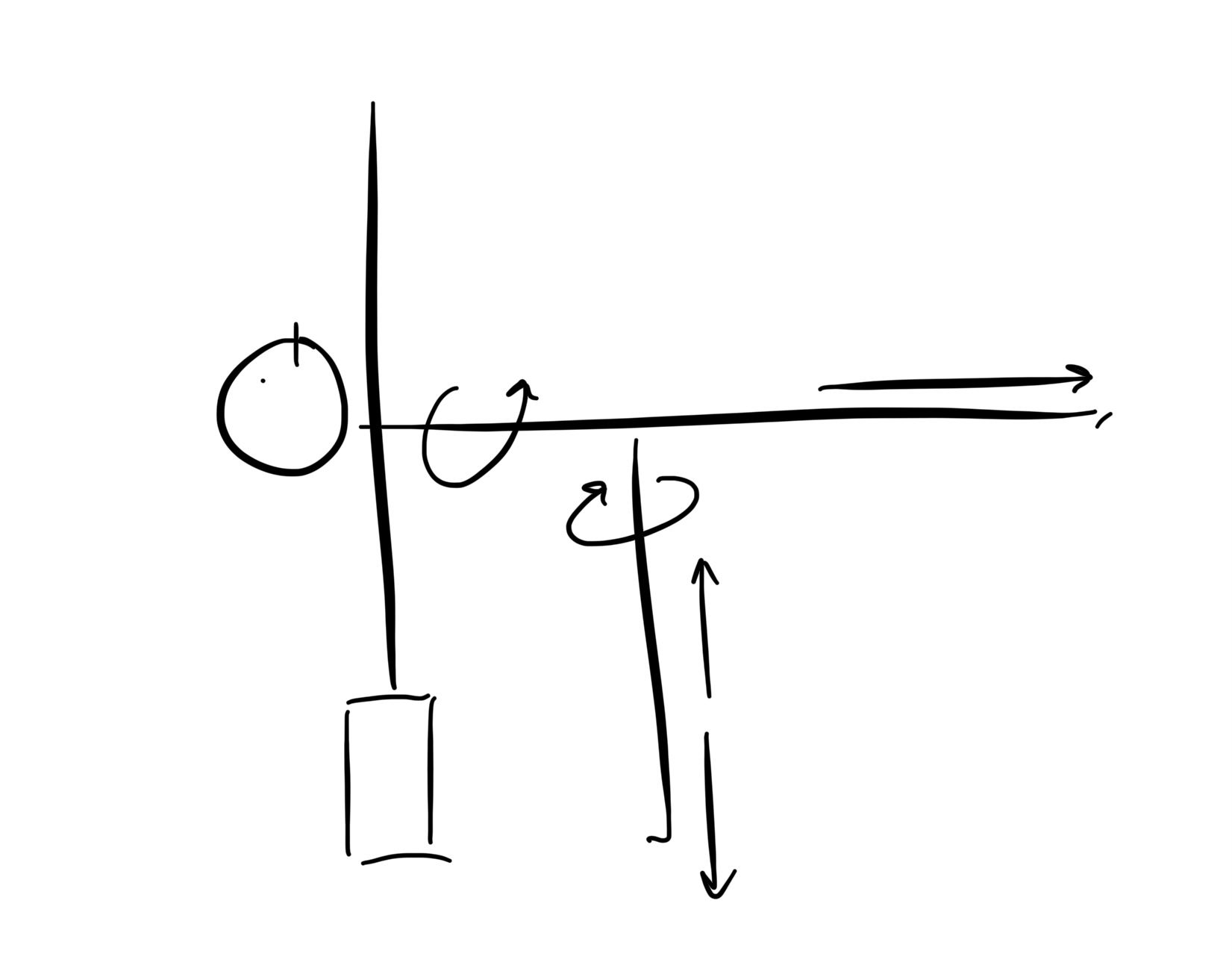
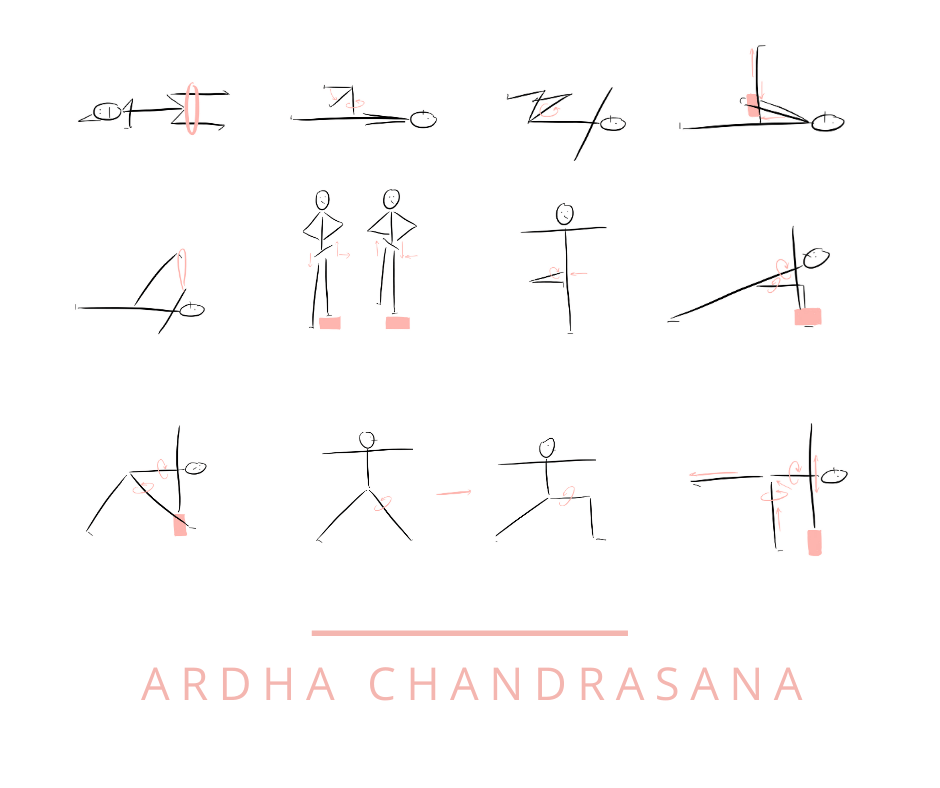

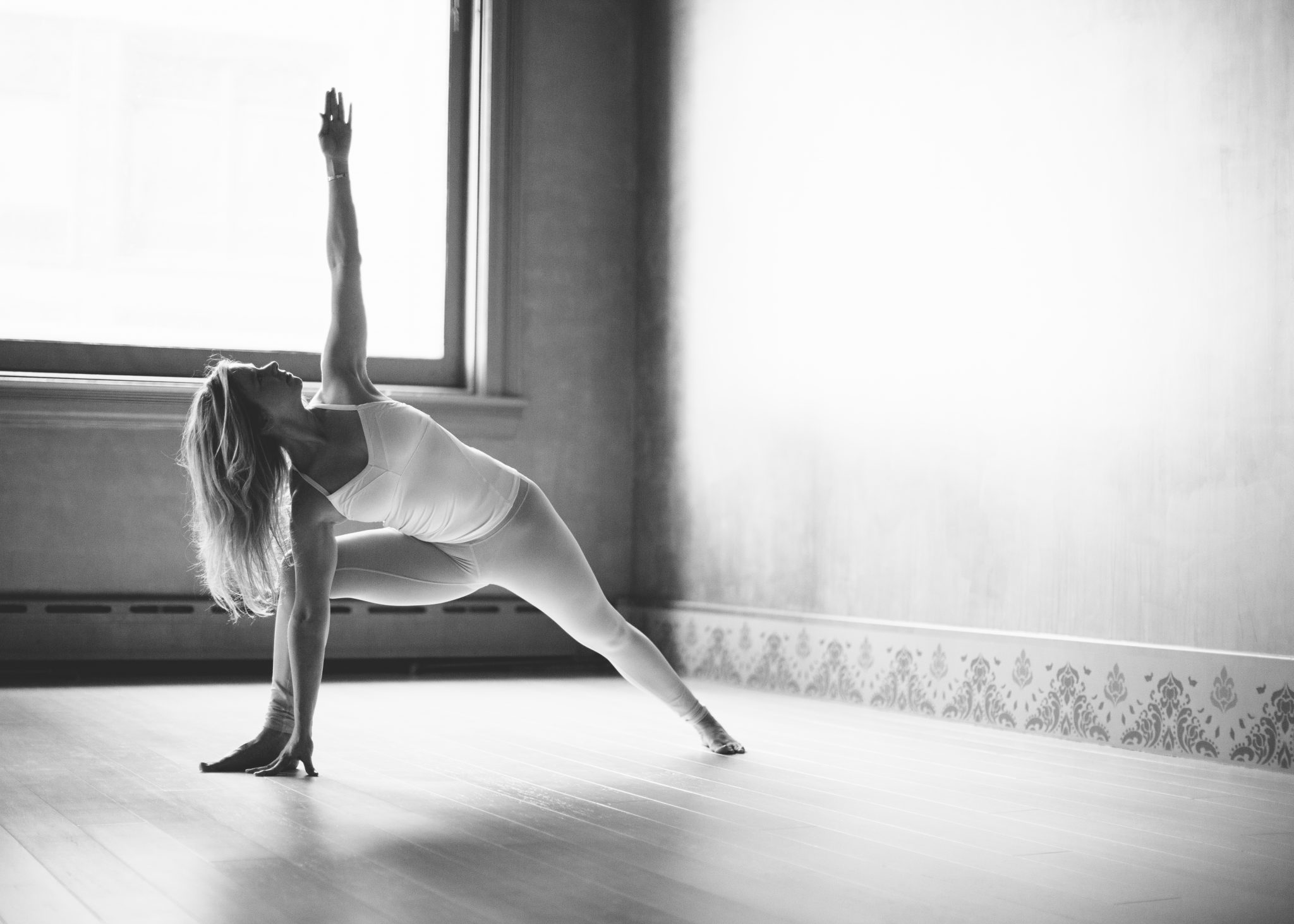
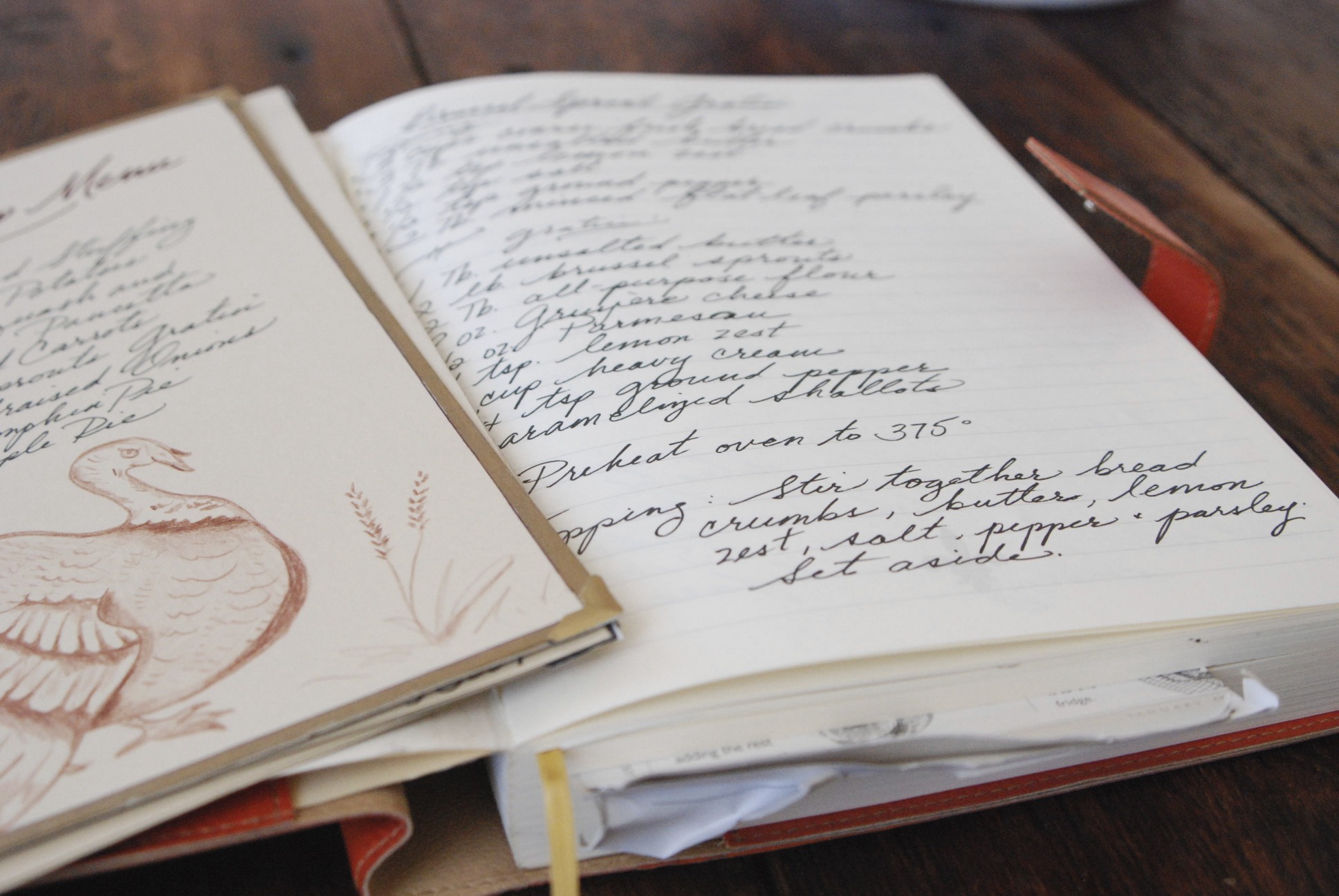
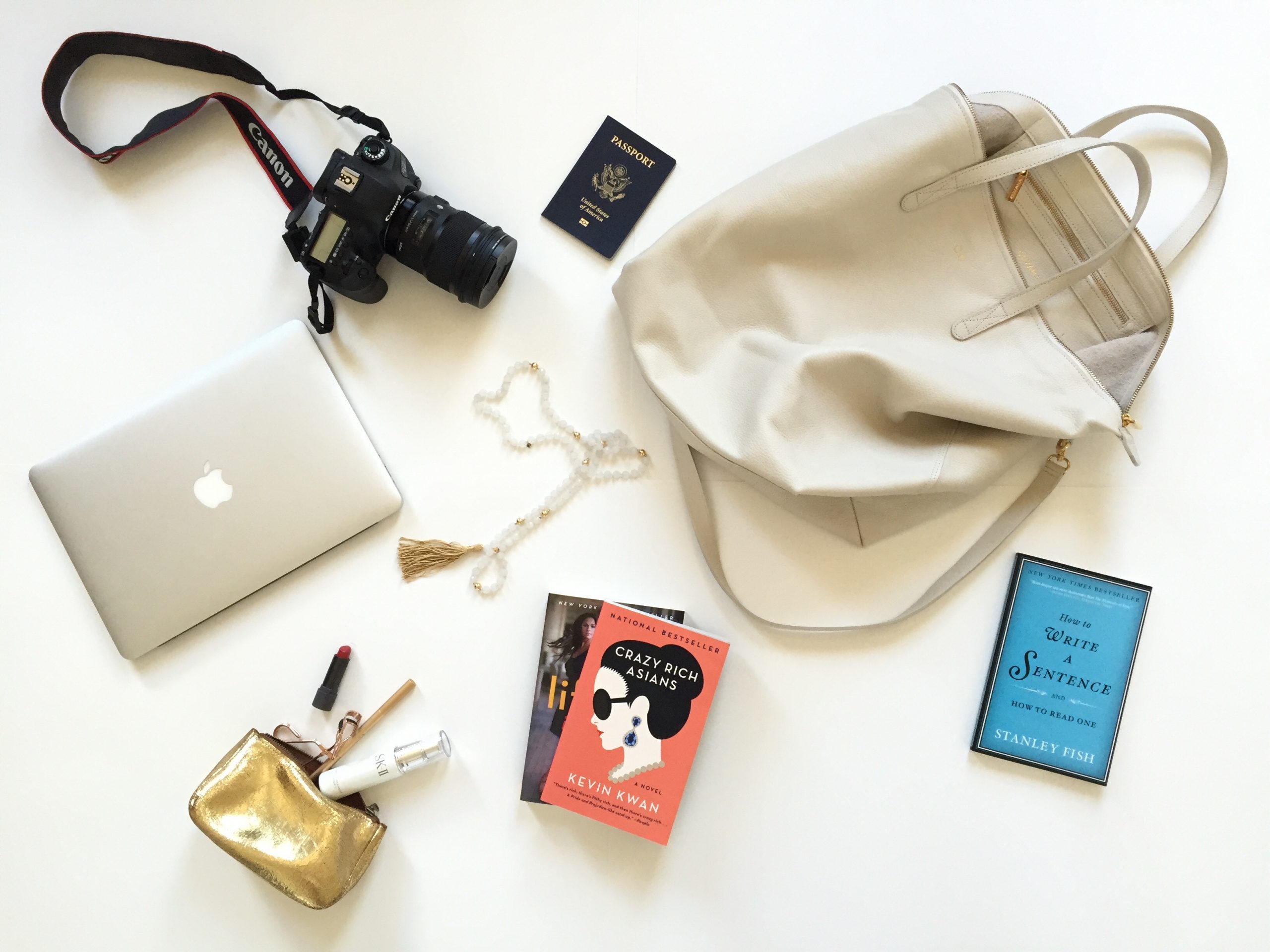
Join the Discussion